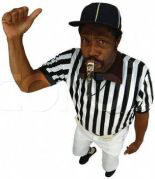Gaa Under GunnarTM can be
and has been played in different variations. Below you will find a
list of the most used along with a brief description of each. You
will also find the codes you need to decipher the game type listed
with every result sheet. These are the most used, but just go
innovate!
The codes used to distinguish the
different variations are as follows:
|
S = Single Player
|
SD = Single Drinking |
|
T = Team |
DD = Double Drinking
|
|
1D1I = 1 die & 1 icon
|
CS = Closed Stations
|
|
2D2I = 2 dice & 2 icons
|
SP = Sprint |
Classic GUG
is the original and most played version of the game. It is coded C for
Classic in the result sheets and its variation code is S-1D1I-SD
indicating multiple single players using one die and one icon each and
drinking as specified in the rules. This is the game version described
in the rules document.
Classic Team GUG
is the original team variation of the game. It is coded CT for Classic
Team in the result sheets and its variation code is T-1D1I-DD indicating
multiple teams of two players using one die and one icon per team and as
a team drinking double the amount as specified in the rules. It is left
to the team to decide who drinks how much – normally players drink equal
amounts with stronger drinking players helping out weaker drinking
players if needed.
Classic Sprint GUG
coded CSP in the results sheets is a single player variation of the
Classic GUG. Its variation code is S-1D1I-SP indicating a single player
using one die and one icon in a timed game with the purpose of
completing it as fast as possible. There is only one player at the game
board at a time with other players timing and observing.
Double Up Team GUG
coded DUT in the results sheets is a variation of Classic Team GUG. Its
variation code is T-2D2I-DD indicating multiple teams of two players
using two dice and two icons per team drinking double the amount. Each
team rolls two dice and moves their two icons (one linked to each team
member) by dedicating a single die to a single icon each turn after
rolling. Each player drinks for both the team icons.
The Closed Stations variations coded
-CS following the code of the variation played (possibly any of the four
mentioned above) is an addition to the original game and requires
additional equipment. A specified number of end stations are drawn at
random and closed for the game meaning that no inhibitions can be
dropped at then - they can be used when moving though. In the same way
end stations can be drawn at random and have their drinking requirements
doubled or tripled. Heathrow cannot be closed. Standard is closing five
south and five north end stations plus doubling drinking at three
stations and tripling at one.
Tournament
and coding variations
Gaa
Under GunnarTM is often played in a tournament format when
serious players are gathered. Normally the players present decide on a
format based on the following considerations:
1)
Number of players – equal division into heats
2)
Minimum and/or maximum games a player needs to play
3)
Possibility for two routes to the final giving players who qualify
directly for the final an advantage over players qualifying themselves
through a
repêchage.
Below
you find the codes and instructions for understanding previously used
tournament formats as well as an example for clarification.
H = Heat
(first layer)
SF =
Semi-final (second layer)
R =
Repêchage (intermediate layer)
F =
Final (last layer)
- =
separates the layers
/ =
separates the layer-info from the info on movement of players to
subsequent layers
the
number in front of a layer (before the / ) indicates the number of games
played in the layer
the
number in front of a layer (after the / ) indicates number of players
moving to the then given layer
the
number after a layer indicates the number of players in each game in the
given layer
@X =
indicates a rotation-structure of some sort in the given layer where all
players play more than one heat. X indicates the total number of rotated
players.
The
standard format with 8 players is then coded as 2H4/1F2R-1R4/2F-F4
indicating 2 heats of 4 people with the winner moving to the final and
second and third place moving to the repêchage followed by 1
repêchage of 4 players with the winner and runner-up joining the heat
winners in the 4 player final.
The
format “3H3/2SF-2SF3/1F2R-1R4/2F-F4” was used for the Roskilde 2003
Tournament and indicates the following tournament structure: 3 heats of
3 people with the 2 best moving to the semi-finals followed by 2
semi-finals of 3 people with the winner moving to the final and second
and third place moving to the repêchage followed by 1 repêchage
with the two best moving to the final followed by a final of 4
people.
|

![]()
![]()
![]()








